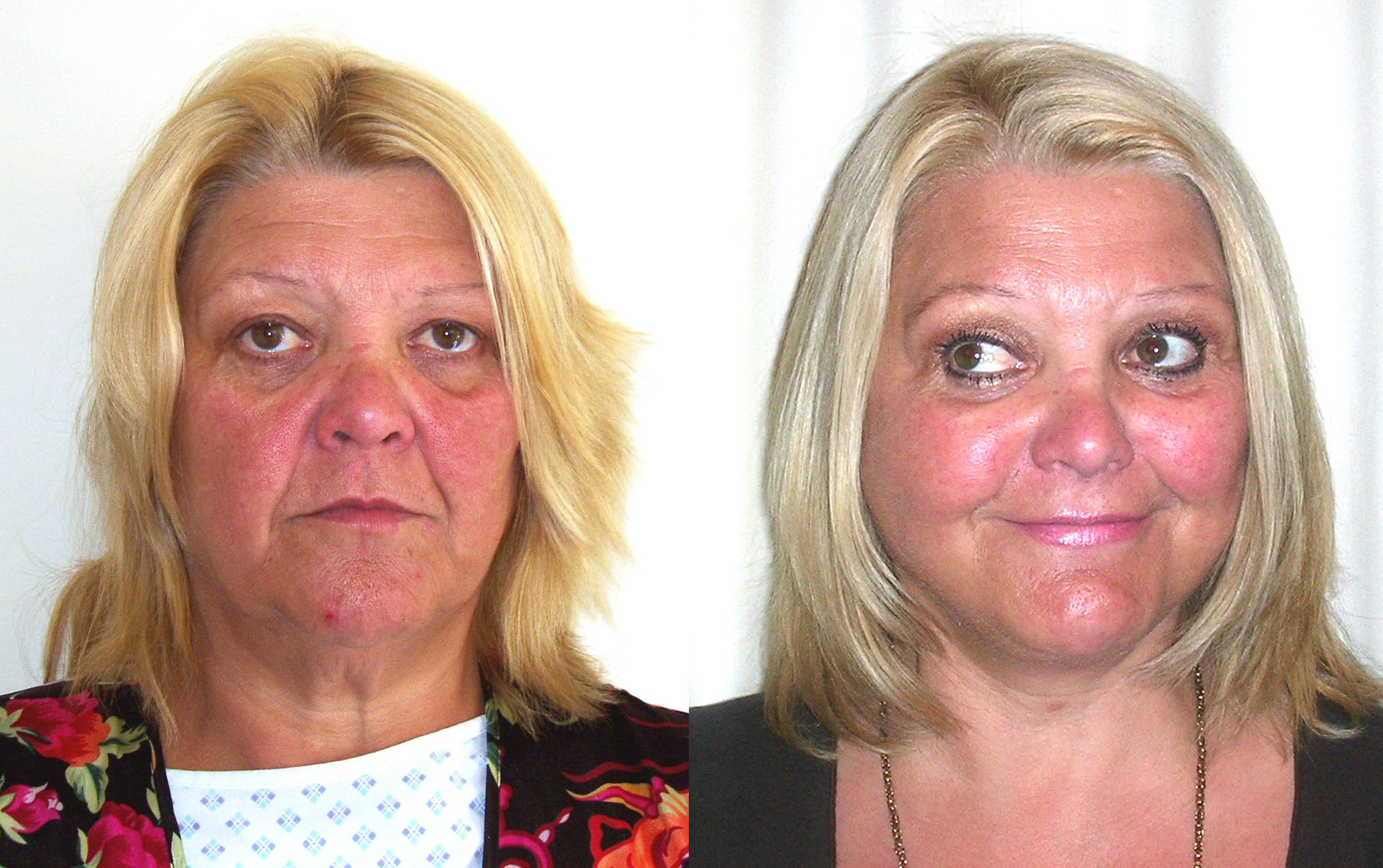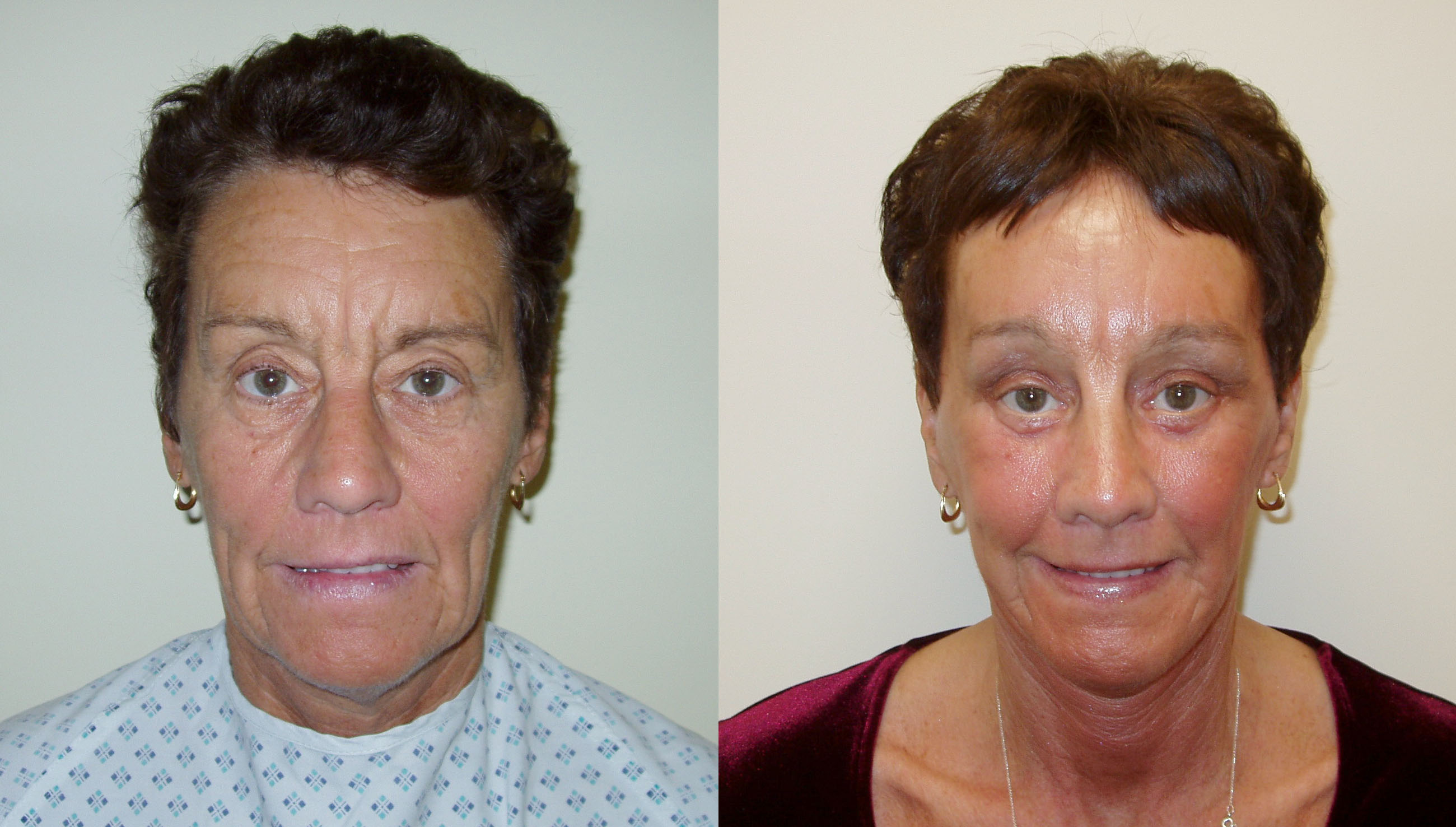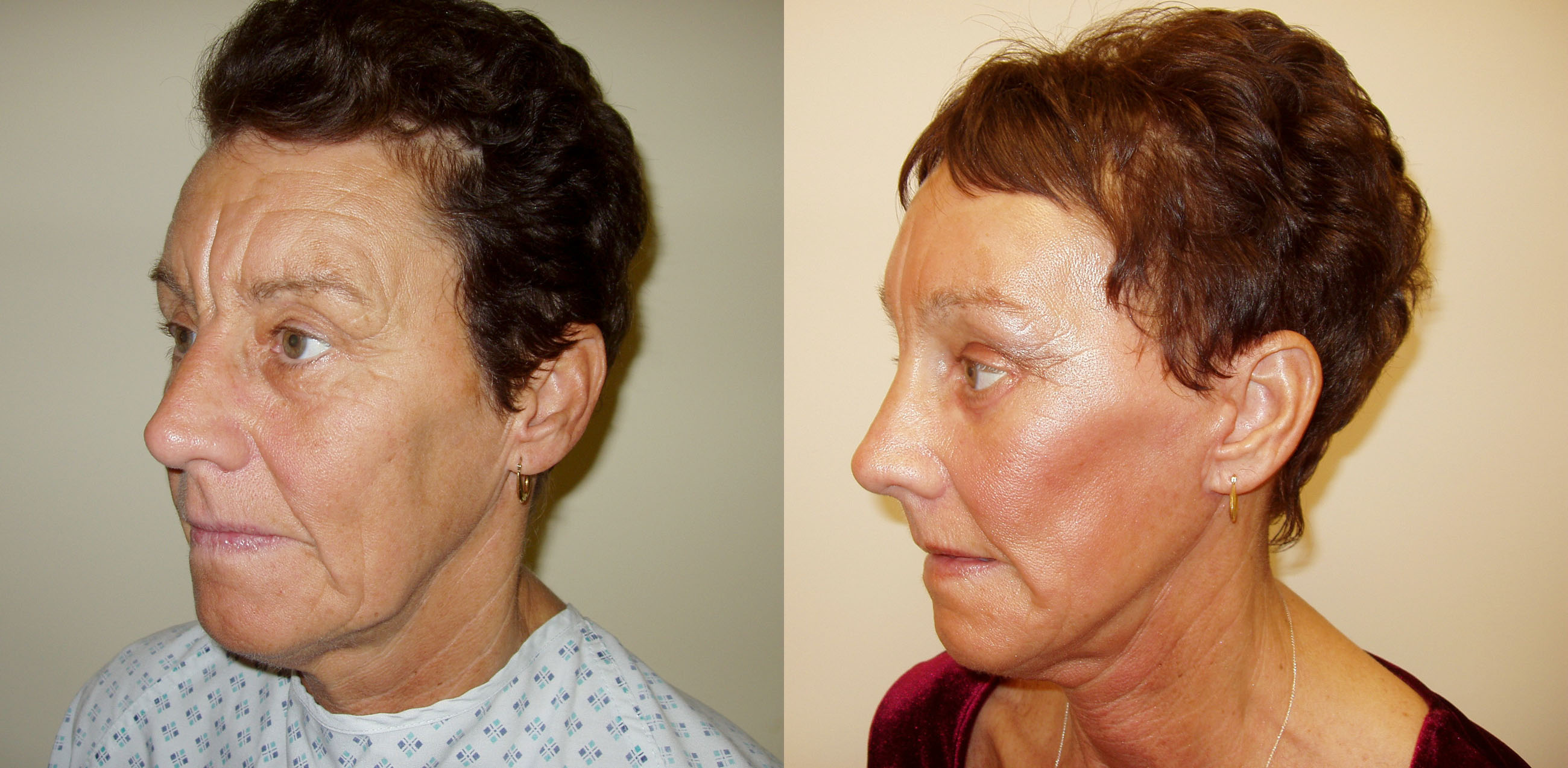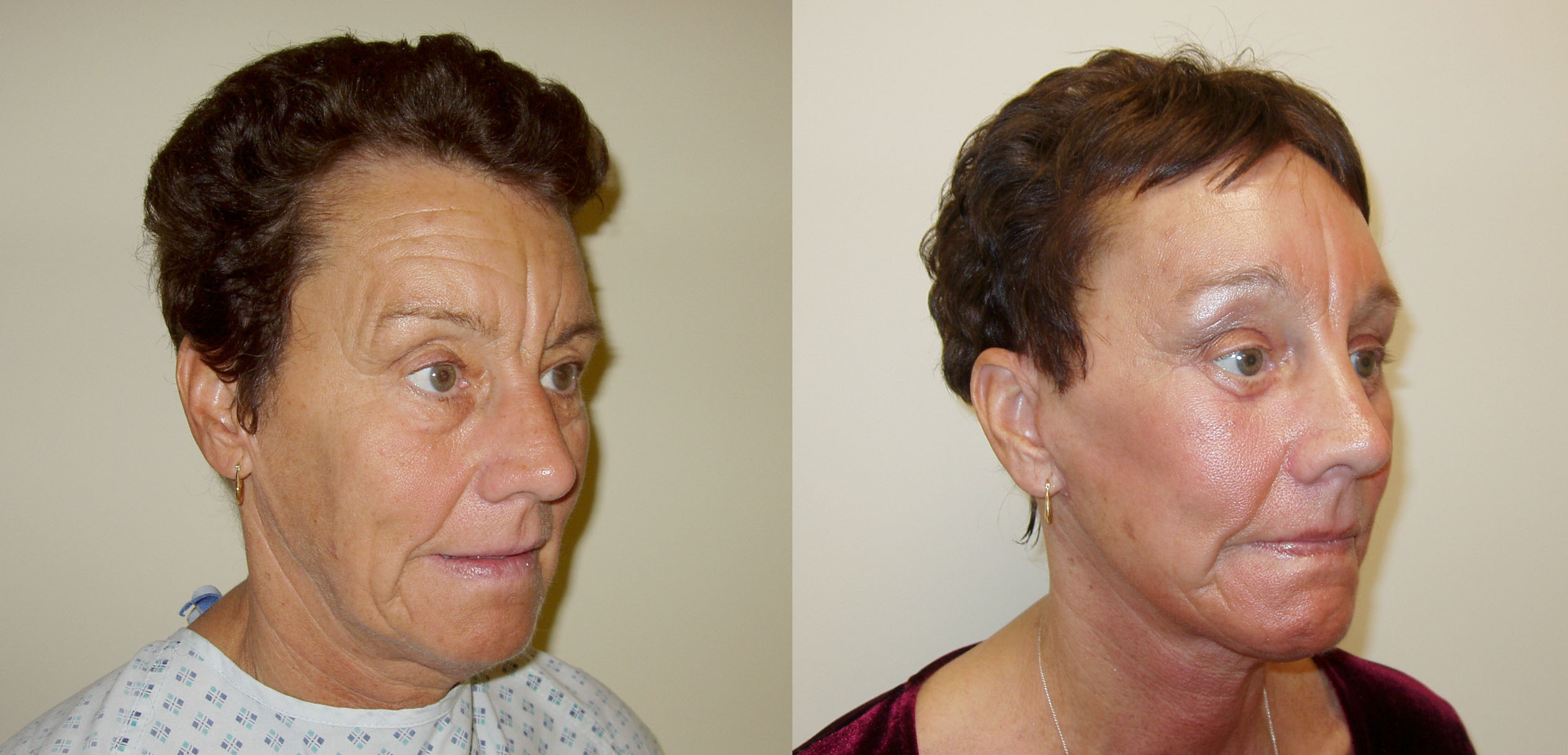Risks and limits of surgery
I am worried i will look unnatural and ‘operated’
The media is full of images of people who have had ‘bad’ facelifts. I have always believed that you should look natural after a face lift and have avoided techniques that damager the natural beauty and shape of the face. It is very important that your surgeon has experience in face lifting and has a thorough understanding of facial anatomy. At consultation you will see images of range of patients that I have treated to demonstrate my techniques and results.
Is it a major operation?
Face lifting is an operation that takes time, experience and skill, but it remains a skin operation with some manipulation of the muscles. It is perceived as a major undertaking because it affects the most visible part of a patient and of course all patients worry about any complication in this area.
As long as your general health is good and any medical conditions that you have are well-controlled serious complications are unlikely but I will go through all this with you at consultation.
How long will it take before i can go out and about without people knowing that i have had a facelift?
This is one of the commonest questions my patients ask and it depends on the extent of the work and also varies considerably from individual to individual. As a general guide;
The skin heals and the swelling usually settles within 7-10 days. Sometimes, particularly if there is more fat in your cheeks, swelling can last considerably longer. I will guide you on this at consultation. In my experience bruising is much less of a problem with the aqua facelift but generally bruises that do occur last 7-14 days and may track into the neck. Scars will be red initially and then usually fade over the ensuing weeks or months.
Do i have to stop smoking?
Yes. You will be advised to stop smoking because persisting with smoking can affect healing. Smoking also puts you at a higher risk of other complications which I will discuss at your consultation.
What are the risks?
Like any operation face lifting carries some risks. These will be discussed with you in detail at your consultation with me.
Some medication that you take can affect the tendency to bleed and this includes drugs of the aspirin family and anti-coagulants in general. It is important that you bring all these to my attention at your consultation.
When can i wear make-up?
Once the wounds are healed (usually 7 to 10 days) make-up can be applied to these areas. It is important that you use new, fresh make-up as old make-up can harbour bacteria. It is also important that any make-up, which is applied, is of very low irritancy and hypoallergenic products are best for this purpose.
Is it painful?
Pain is rarely severe following facelift surgery and indeed severe pain may signify a problem. Therefore, although all my patients are supplied with strong painkillers, paracetamol suffices.
I have lines around my mouth, will a face lift help these?
The area around the mouth comprising the upper and lower lips is not significantly improved by a face-lift nor is the surface of the skin in general. I use surgical dermabrasion for deep lines around the mouth. This can be done at the same time as your face lift. For less severe lines, platelet rich plasma combined with Botox and fillers can be used.
Does a face lift improve eyebags?
Facelift surgery will not address lower eyelid bags, upper eyelid bags and wrinkling around the eyes, temples and forehead. In these situations I offer my patients brow lifting with or without eyelid lifting if the changes require surgery. Often these areas can be improved with a combination of fat grafting and non-surgical treatments such as Botox, Vitamin C serum and platelet rich plasma.
How long does it last?
You should see your surgery a way of turning the clock back. How long it lasts depends on how quickly you as an individual age. This is partly genetic but also relates to lifestyle factors such as sun exposure, smoking, diet and exercise. As part of your treatment plan I will always offer you non-surgical anti-ageing treatments and fat grafting (if needed) to combat the effects of ageing.
Aftercare
As we get older a number of changes take place in the face. These changes are influenced by genetic factors, gravity and lifestyle. Our understanding of how these factors work together to age the face has altered dramatically. This in turn has altered the way in which we approach the ageing face.
We now understand that loose skin is an end-product of this process rather than the fundamental cause. The face and neck are supported by two important arches – the first is an arch of bone and soft tissue that extends from the temples, around the eye and to the side of the nose. This arch is important in supporting the cheeks. The second arch is the lower jaw which is important in supporting the lower mouth area and the neck.
Over time bone thins in these areas and fat is also lost. The skin is no longer as well supported and the cheeks start to sag forwards and downwards, deepening the fold that runs from the nose to the corner of the mouth (nasolabial fold). This same migration of the cheek leads to jowls disrupting the line of the jaw and giving the face a rectangular appearance instead of a more youthful almond shape. The cheek also pulls away from the lower eyelid area creating a groove between the two.
Sagging of the muscles in the neck and accumulation of fat under the chin starts to obliterate the normal tight contours of this region and excess skin can develop folds, which are both unsightly and ageing. Similarly, folds and lines develop in front of the ears.
The result is an individual who may feel young and fit but has the outward appearance of being old, tired and worn out. This latter aspect is the commonest reason patients come to me for a facelift. They are not typically looking for a radical change in their appearance, rather they are looking to set the clock back to when they were happier with their face, in a way that looks natural and restores that energetic look.
My approach to facial ageing uses face and neck lifting as part of a treatment plan to rejuvenate the face. It is part of the structural repositioning and can be combined with brow and eyelid lifting. In addition I use fat transfer to restore some of the lost fat to the face, Botox to support the brow and reduce lines around the eyes and forehead, platelet rich plasma and Vitamin C serum to give the skin a youthful glow and finally a small amount of filler to give a natural rejuvenation of the lips. These additional treatments come directly from our recent understanding of facial ageing and help to slow down future ageing after your surgery. In some of my patients with early changes they can be used instead of surgery (see non-surgical facial rejuvenation).
There are a number of different types of face-lift but the principles are similar whatever the technique. The aim is to gain access to facial tissues that have sagged, reposition these and in the process remove excess skin.
This can be achieved by carrying out parts of the dissection at different anatomical levels whether that is at the level of the bone, at the level of the muscle or simply at the level of the skin.
Over the years I have used most techniques in face lifting and in my experience have found that lifting the skin and tightening the underlying muscle (the superficial musculo-aponeurotic system or SMAS) gives a good reliable result with a natural appearance of both the face and the neck. I carry out aqua-dissection using the Body-jet in all my face and neck lifts as I have found that this is gentle way of freeing the tissues with excellent safety and recovery.
At your consultation I will start by taking your general medical history and information about lifestyle. We will discuss your aims and I will examine you looking at your general build, your facial bone structure, the tissues and the condition and elasticity of your skin. This will allow me to give you an idea of what can be achieved and any limits. From this we will work out a surgical plan for you. Sometimes the plan may involve more than one stage of surgery, particularly if other areas require treatment and it will almost always include the option of after surgery non-surgical treatments to maintain your face for the future.
Your operation is carried out under general anaesthetic (local anaesthesia with sedation is also available for some patients) and may take 2 to 4 hours.
If excess fat is present in the neck and on the chin, I carry out device to free the tissues of the face and neck.
My favoured incision is along the hairline above the ear as this allows me to lift the cheek without altering your hairline which I believe gives a more natural look. I then pass around the margin of the tragus, (which is the cartilaginous part of the ear that points backwards from the cheek) before re-joining the groove in front of the ear. The scar then extends around the earlobe to the back of the ear where it is hidden until it crosses the bald area between the ear and the hairline. At this point I prefer to run the scar along the hairline. This allows a good correction of the neck again without any loss of hair-bearing scalp or alteration of the hairline. Once the skin has been lifted and freed, the underlying muscle is exposed and this is tightened to improve the position of the cheek, the jowl and the neck.
Careful tailoring and closure requires judgement, experience and patience and I always allow myself plenty of time for this most important step.
I usually use soft silicone drains which are removed the next day and usually keep you in hospital for two nights after your operation.
I would encourage you to come back to see me again as needed to go over everything again and so that I can answer any questions that you might have.
It is very helpful if you can bring a few pictures of yourself through the decades and I also encourage you to bring a friend or trusted family member with you to help you with the process.
Medication that you take can affect the tendency to bleed and this includes drugs of the aspirin family and anti-coagulants in general. It is important that you bring a list of these to your consultation.
If you decide to go ahead with surgery we will arrange a date for this and you will receive confirmation via letter with detailed instructions about what you should and should not do before surgery.
Your surgery will typically take between 2 and 4 hours and you will normally be in hospital for two nights. After your operation you will wake up gently in the Recovery Room where my anaesthetist and I will see you to ensure that you are comfortable. Face lifting is not a typically painful operation but strong painkillers will be available to you as required.
You will be wearing a soft support garment which will also be holding light dressings in place.
Once on the ward I will visit you again to check that all is well and to let you know how your operation went. We will encourage you to get up and walk short distance s as soon as you are able.
The following day I will visit you again and your drains will be removed. After this you will be able to shower and most patients find this very comforting. Our nurses will help you with this.
Your garment will be reapplied and you ideally should wear this for 6 weeks as much as possible
Following discharge each patient will have a recovery plan tailored to their situation, but as a general guide:
You should try to keep your head elevated by sleeping on an extra pillow.
Tyr to avoid sudden sharp neck and jaw movements for the first 3to 4 weeks as these can stretch the correction.
You may wet the area with running water and you may shower although I recommend that you use liquid baby soap out of a dispenser until your incisions are healed so as not to irritate your eyes.
You may apply a thin layer of ointment to your wounds for the first few days for comfort.
You may be able to carry out light work after 7 to 10 days, but allow yourself 14 days off.
You may drive short distances after 1 week but you should be aware that sudden sharp neck movements could stretch the correction of the neck and affect the longer term result.
I recommend that you restrict exercise to walking in the first 3-4 weeks. Thereafter you may carry out general light exercises and gradually build up to vigorous exercise over the next 3-4 weeks.
I will follow you up within a week to remove your stitches and check your progress and will monitor your one week, 2 weeks and 4 week intervals after this, until everything has settled.




